My favorite Thanksgiving side is also the easiest: Brazilian-style collard greens
Dr. Jessica B. Harris is an award-winning culinary historian, cookbook author and journalist who specializes in the food and foodways of the African diaspora. With this column, "My Culinary Compass," she is taking people all over the world — via their taste buds — with recipes inspired by her extensive travels.
Compass points: 22.91 degrees south, 43.17 degrees west. Rio de Janeiro.
I don’t remember the exact year of my first visit to Rio de Janeiro. I recall sitting on the plane with the tune "Flying Down to Rio" floating in my head. I also recall that I still had a waist and was thin enough to entertain thoughts of wearing a tiny tanga bathing suit (I merely entertained them, modesty prevailed.) A Cidade Maravilhosa met all expectations and was a spot where the beach was never far from mind.Names like Copacabana, Leblon and Ipanema simply added to the water’s seduction. In Rio, while every day may bring some aspect of the beach, Saturday for many is given over to the total pursuit of the pleasures of sun, sand and sea.
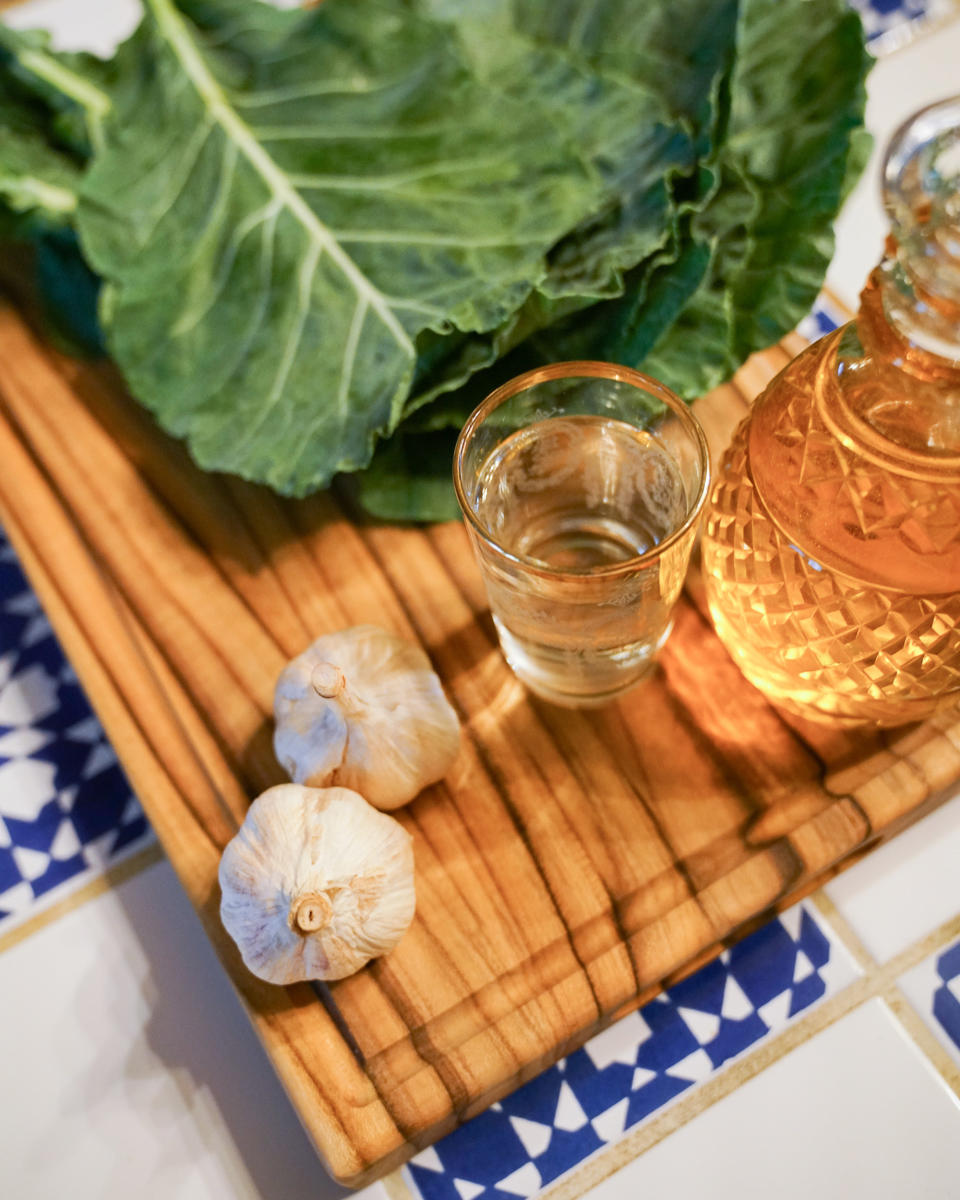
Bathing-suit fantasies notwithstanding, I’m not a lover of sand or of salt, but I am more than thrilled to be nearby (or in the case of Rio across the street) usually ensconced in one of the air-conditioned restaurants that offer a Saturday buffet celebrating the glories of what is commonly considered Brazil’s national dish: feijoada.
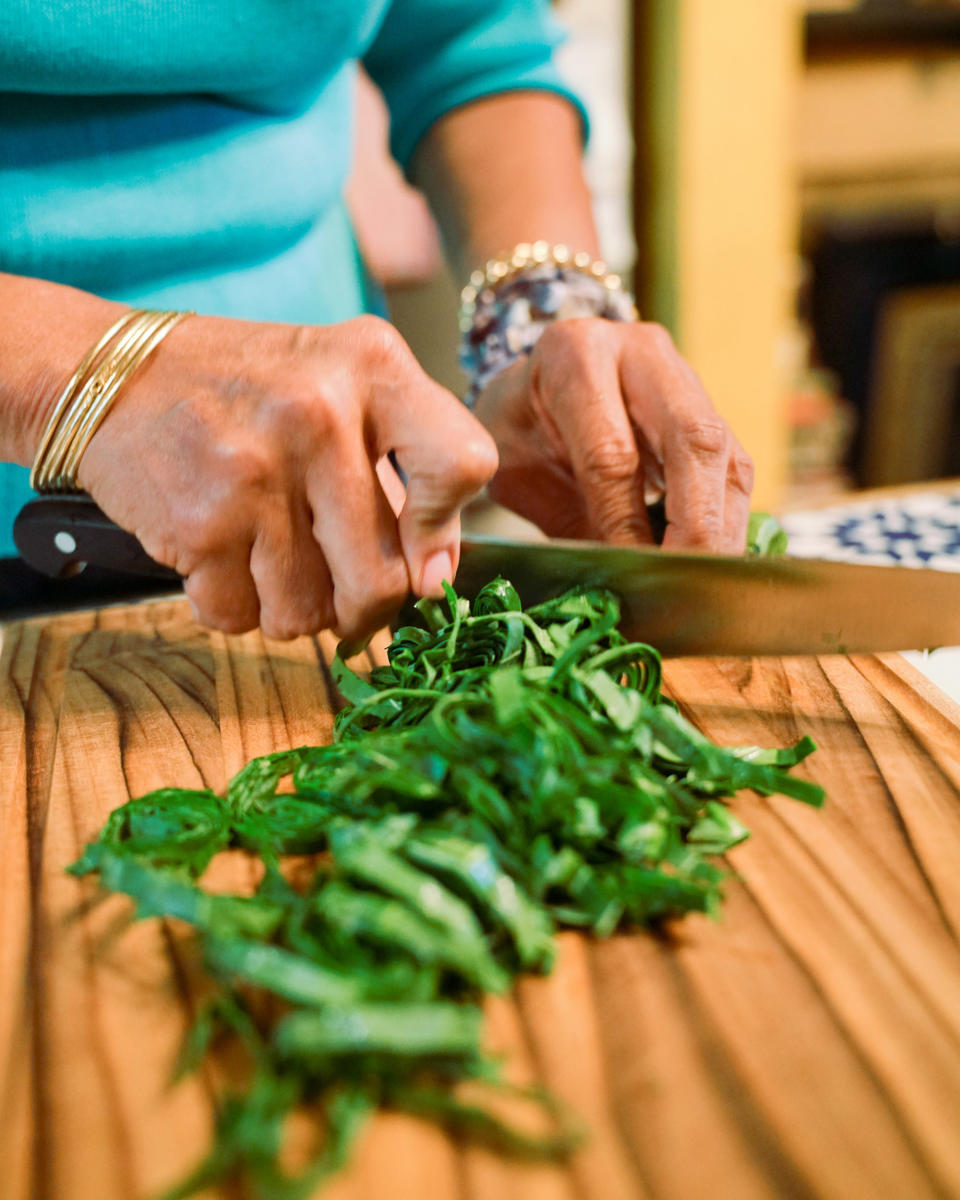
While feijoada is often given a Portuguese origin, many years ago a descendant of Brazilians who had repatriated themselves back to Africa post-Emancipation suggested to me that in fact, feijoada is a dish that came to Brazil via the ingenuity of enslaved peoples who brought together the leftovers from their enslavers’ tables to create a savory stew that combines black beans with a medley of meats that can include chouriço, jerked beef, bacon and more, depending on the creativity and the pocketbook of the chef.
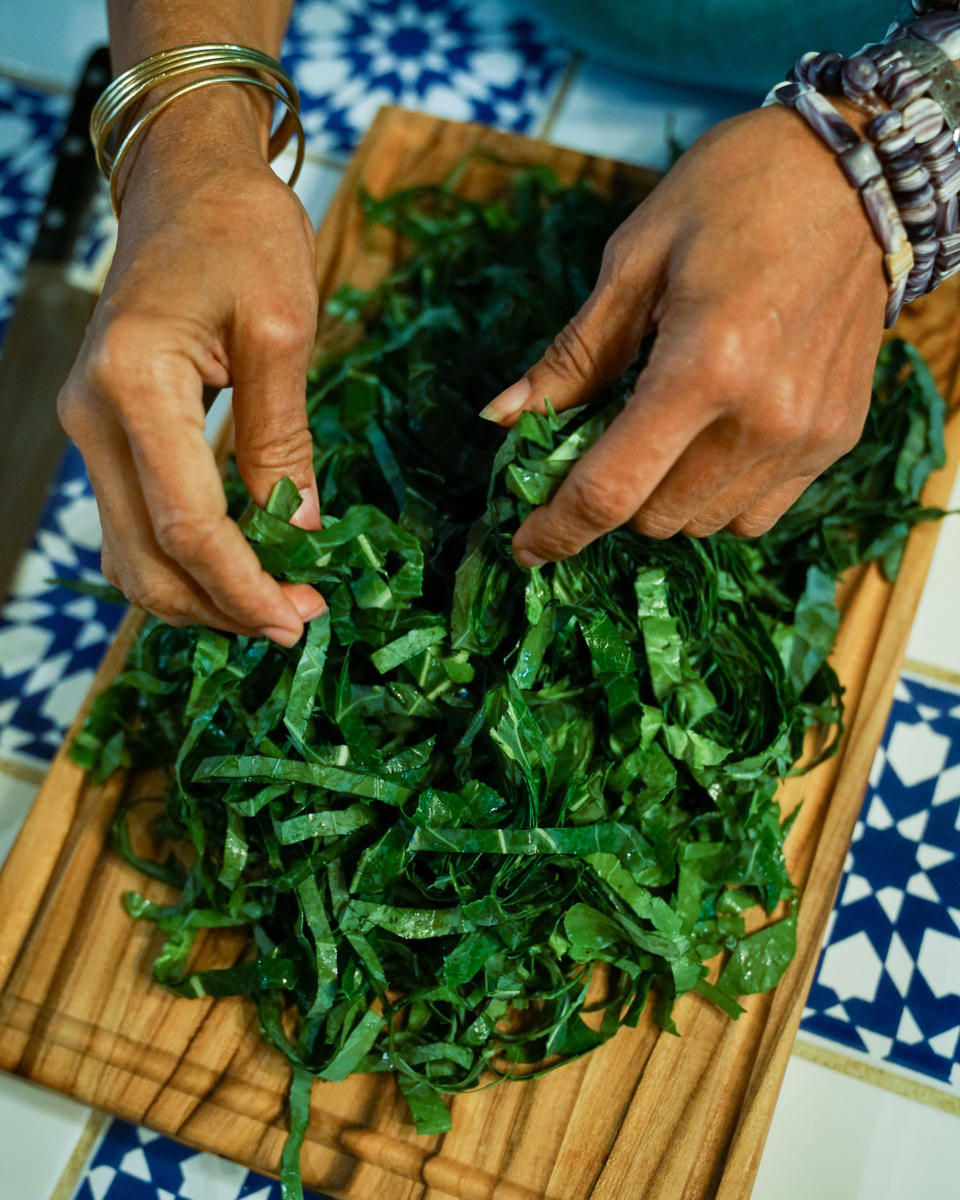
Because of its multiple ingredients, feijoada is perfect for a groaning board buffet. There are not only the black beans in their rich inky broth, but the meats and the white rice over which the stew is served, there are also the things that simply go under the name accompaniments: slices of orange, hot sauces, farofa (toasted cassava meal) and my favorite part of the ensemble: couve.
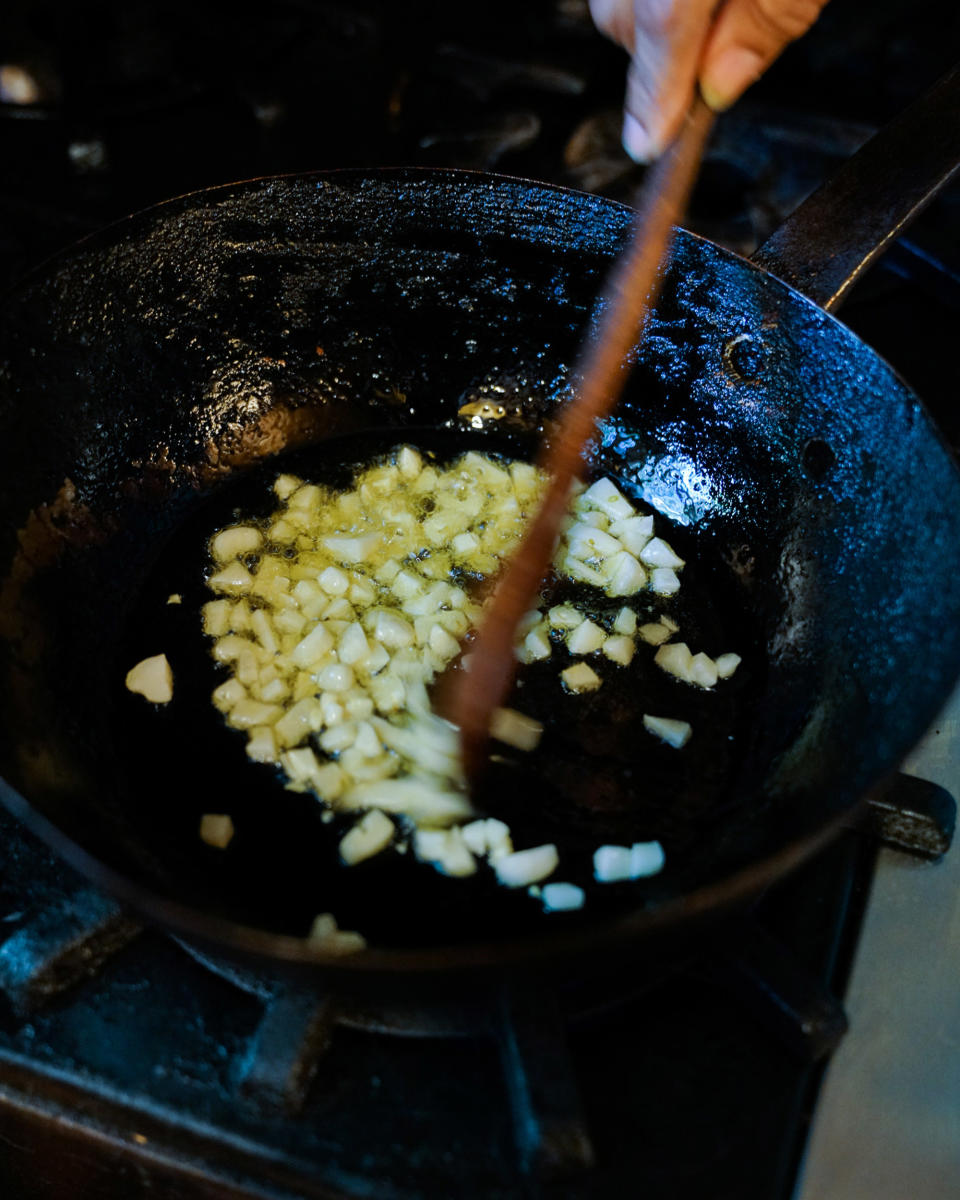
Couve, thin strips of kale that are sautéed with olive oil and garlic, adds a spot of brilliant green to the feijoada plate and along with the orange slices breaks up the meaty intensity of the stew. Over the years, I found out that I liked the couve enough to make it a side dish at my table even when I wasn’t serving the stew. I also began to substitute collard greens for the kale because I prefer the taste.
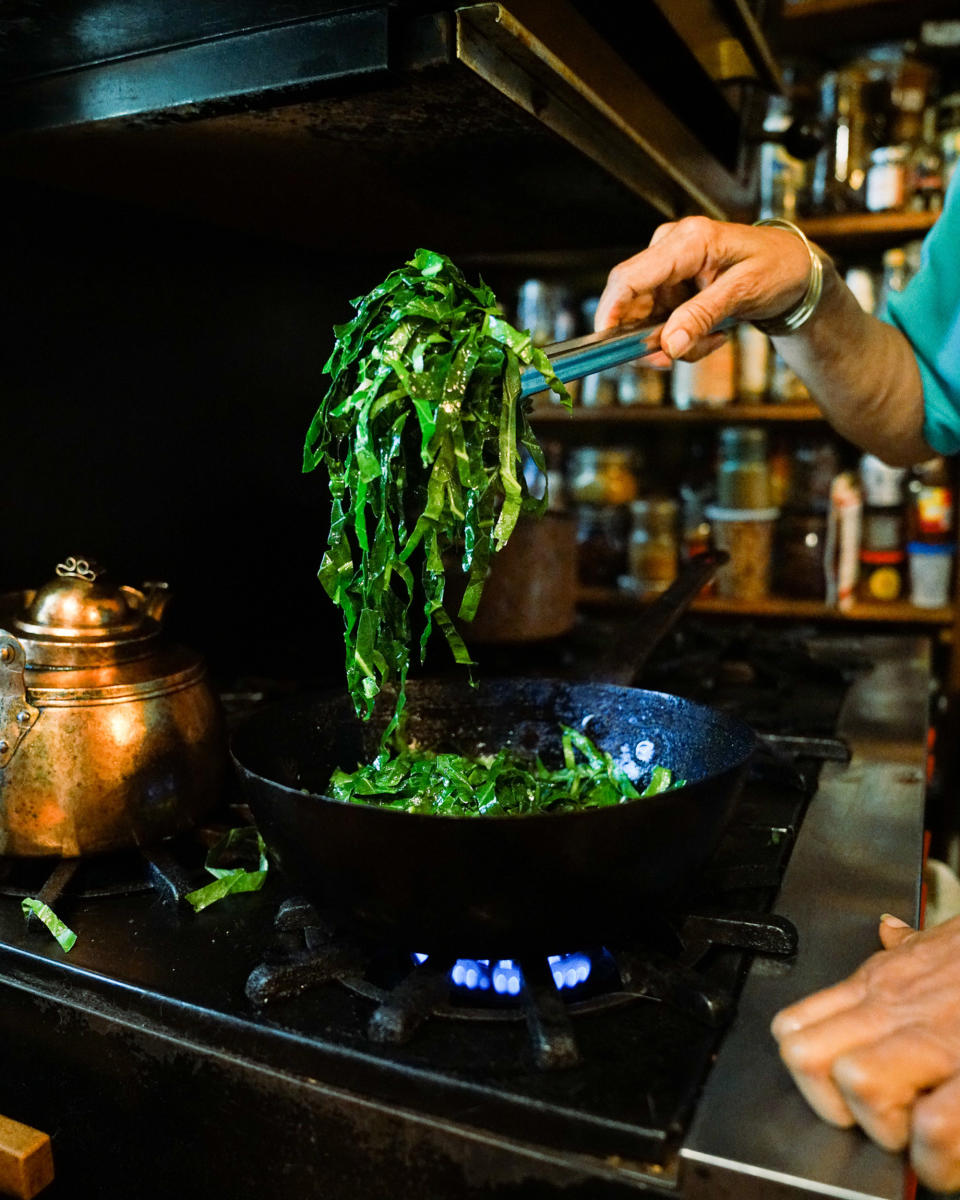
The traditional Southern preparation for collards demands hours of cooking time and often depends on smoked meat of some sort for seasoning. With my couve variant, I realized that the now transformed dish was simple enough to even prepare on a busy weeknight. The only time factor is preparing the greens and, if necessary, the cutting can be done the day before kept in the refrigerator with a damp (moist) paper towel.
Get the recipe:
Brazilian-Style Collard Greens by Dr. Jessica B. Harris
The couve, now re-baptized Brazilian-style collard greens, are a great accompaniment to any dish — especially on Thanksgiving. I find them especially toothsome with turkey, grilled chicken thighs, grilled pork chops or even with black beans and white rice in a vegetarian meal. I always have hot sauce nearby and a spritz of two is usually called for. Then, I mix up a caipirinha, turn up the bossa nova and dream of the days back in "Rio by the sea-o" when I had a waist.

